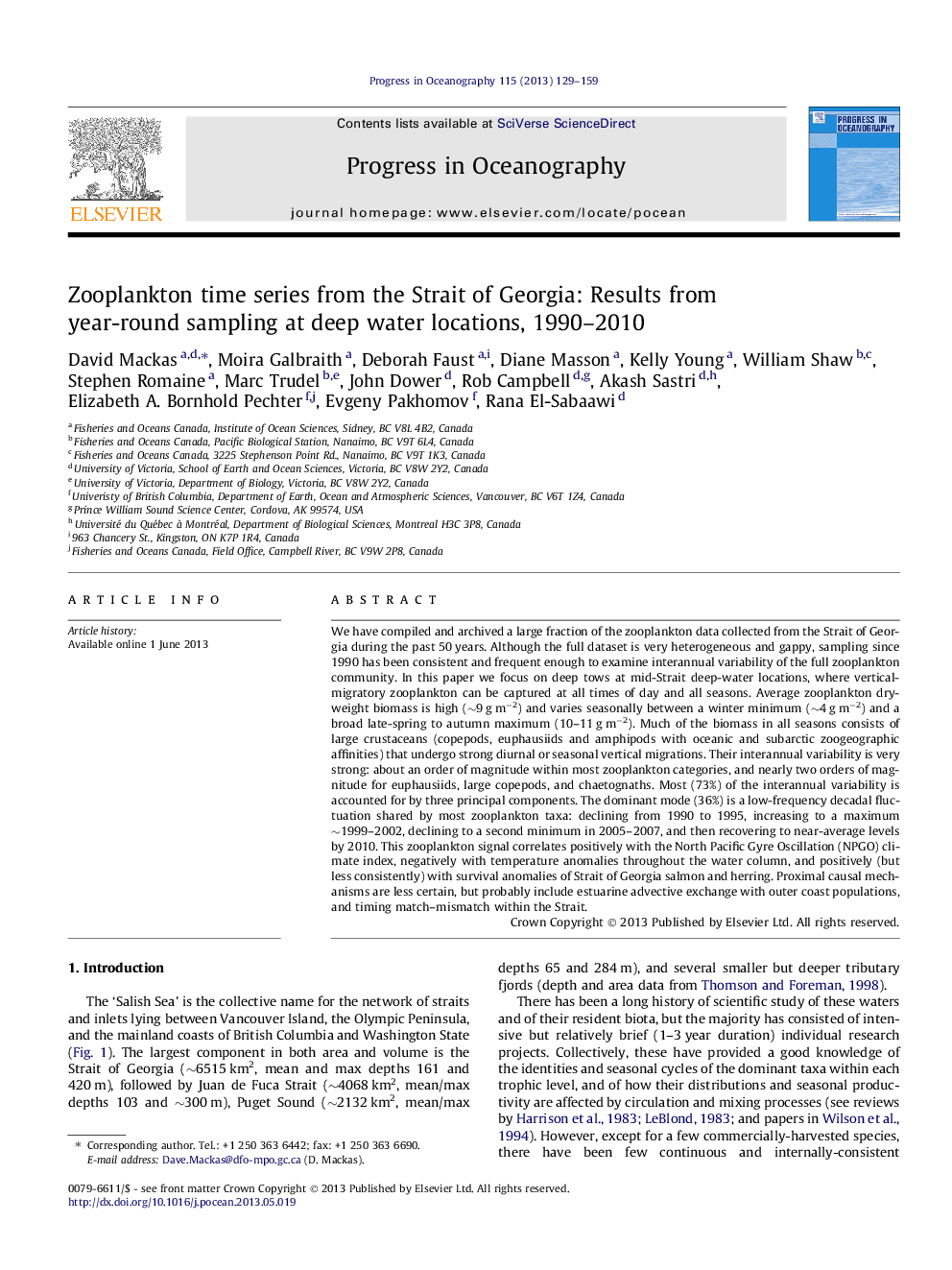| کد مقاله | کد نشریه | سال انتشار | مقاله انگلیسی | نسخه تمام متن |
|---|---|---|---|---|
| 6388760 | 1627940 | 2013 | 31 صفحه PDF | دانلود رایگان |
عنوان انگلیسی مقاله ISI
Zooplankton time series from the Strait of Georgia: Results from year-round sampling at deep water locations, 1990-2010
دانلود مقاله + سفارش ترجمه
دانلود مقاله ISI انگلیسی
رایگان برای ایرانیان
موضوعات مرتبط
مهندسی و علوم پایه
علوم زمین و سیارات
زمین شناسی
پیش نمایش صفحه اول مقاله

چکیده انگلیسی
We have compiled and archived a large fraction of the zooplankton data collected from the Strait of Georgia during the past 50 years. Although the full dataset is very heterogeneous and gappy, sampling since 1990 has been consistent and frequent enough to examine interannual variability of the full zooplankton community. In this paper we focus on deep tows at mid-Strait deep-water locations, where vertical-migratory zooplankton can be captured at all times of day and all seasons. Average zooplankton dryweight biomass is high (â¼9 g mâ2) and varies seasonally between a winter minimum (â¼4 g mâ2) and a broad late-spring to autumn maximum (10-11 g mâ2). Much of the biomass in all seasons consists of large crustaceans (copepods, euphausiids and amphipods with oceanic and subarctic zoogeographic affinities) that undergo strong diurnal or seasonal vertical migrations. Their interannual variability is very strong: about an order of magnitude within most zooplankton categories, and nearly two orders of magnitude for euphausiids, large copepods, and chaetognaths. Most (73%) of the interannual variability is accounted for by three principal components. The dominant mode (36%) is a low-frequency decadal fluctuation shared by most zooplankton taxa: declining from 1990 to 1995, increasing to a maximum â¼1999-2002, declining to a second minimum in 2005-2007, and then recovering to near-average levels by 2010. This zooplankton signal correlates positively with the North Pacific Gyre Oscillation (NPGO) climate index, negatively with temperature anomalies throughout the water column, and positively (but less consistently) with survival anomalies of Strait of Georgia salmon and herring. Proximal causal mechanisms are less certain, but probably include estuarine advective exchange with outer coast populations, and timing match-mismatch within the Strait.
ناشر
Database: Elsevier - ScienceDirect (ساینس دایرکت)
Journal: Progress in Oceanography - Volume 115, August 2013, Pages 129-159
Journal: Progress in Oceanography - Volume 115, August 2013, Pages 129-159
نویسندگان
David Mackas, Moira Galbraith, Deborah Faust, Diane Masson, Kelly Young, William Shaw, Stephen Romaine, Marc Trudel, John Dower, Rob Campbell, Akash Sastri, Elizabeth A. Bornhold Pechter, Evgeny Pakhomov, Rana El-Sabaawi,